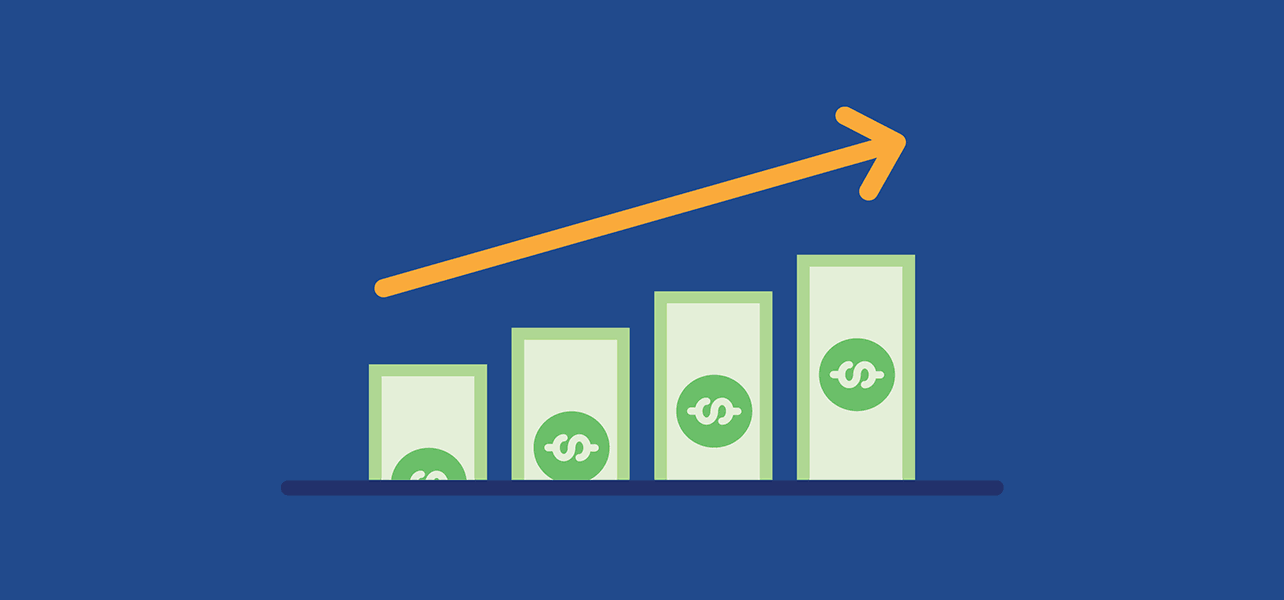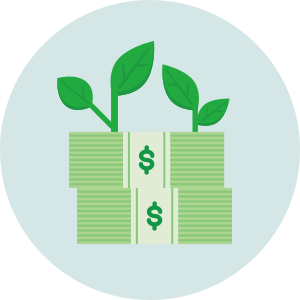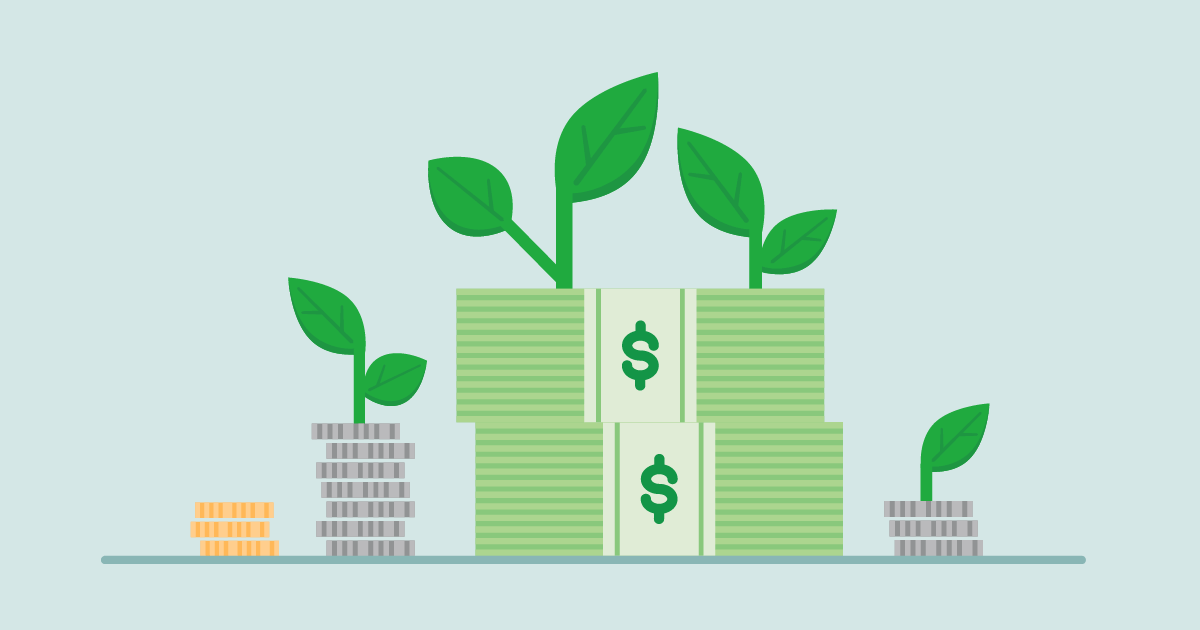An essential guide to building an emergency fund
We’ve all experienced unexpected financial emergencies—a fender bender, an unexpected medical bill, a broken appliance, a loss of income, or even a damaged cell phone. Large or small, these unplanned expenses often feel like they hit at the worst times.
Setting up a dedicated savings or emergency fund is one essential way to protect yourself, and it’s one of the first steps you can take to start saving. By putting money aside—even a small amount—for these unplanned expenses, you’re able to recover quicker and get back on track towards reaching your larger savings goals.
This guide will help you answer the following questions:

Stay informed
Sign up for the latest financial tips and information right to your inbox.
What is an emergency fund?
An emergency fund is a cash reserve that’s specifically set aside for unplanned expenses or financial emergencies. Some common examples include car repairs, home repairs, medical bills, or a loss of income.
In general, emergency savings can be used for large or small unplanned bills or payments that are not part of your routine monthly expenses and spending.
Why do I need it?
Without savings, a financial shock—even minor—could set you back, and if it turns into debt, it can potentially have a lasting impact.
Research suggests that individuals who struggle to recover from a financial shock have less savings to help protect against a future emergency. They may rely on credit cards or loans, which can lead to debt that’s generally harder to pay off. They may also pull from other savings, like retirement funds, to cover these costs.
Get a sense of your financial well-being

How much do I need in it?
The amount you need to have in an emergency savings fund depends on your situation. Think about the most common kind of unexpected expenses you’ve had in the past and how much they cost. This may help you set a goal for how much you want to have set aside.
If you’re living paycheck to paycheck or don’t get paid the same amount each week or month, putting any money aside can feel difficult. But, even a small amount can provide some financial security.
Keep reading to find the savings strategy, or strategies, that work best for you.

How do I build it?
There are different strategies to get your savings started. These strategies cover a range of situations, including if you have a limited ability to save or if your pay tends to fluctuate. It may be that you could use all of these strategies, but if you have a limited ability to save, managing your cash flow or putting away a portion of your tax refund are the easiest ways to get started.
Strategy: Create a savings habit
Building a savings of any size is easier when you’re able to consistently put money away. It’s one of the fastest ways to see it grow. If you’re not in a regular practice of saving, there are a few key principles to creating and sticking to a savings habit:
- Set a goal. Having a specific goal for your savings can help you stay motivated. Establishing your emergency fund may be that achievable goal that helps you stay on track, especially when you’re initially getting started. Use our savings planning tool to calculate how long it’ll take you to reach your goal, based on how much and how often you’re able to put money away.
- Create a system for making consistent contributions. There are a number of different ways to save, and as you’ll read below, setting up automatic recurring transfers is often one of the easiest. It may also be that you put a specific amount of cash aside each day, week, or payday period. Aim to make it a specific amount, and if you can occasionally afford to do more, you’ll watch your savings grow even faster.
- Regularly monitor your progress. Find a way to regularly check your savings. Whether it’s an automatic notification of your account balance or writing down a running total of your contributions, finding a way to watch your progress can offer gratification and encouragement to keep going.
- Celebrate your successes. If you’re sticking with your savings habit, don’t miss the opportunity to recognize what you’ve accomplished. Find a few ways that you can treat yourself, and if you’ve reached your goal, set your next one.
Who is this helpful for: Anyone, but particularly those with consistent income. If you know you have a regular paycheck or money consistently coming in, you can create a habit to put some of that money towards an emergency savings fund.
Strategy: Manage your cash flow
Your cash flow is essentially the timing of when your money is coming in (your income) and going out (your expenses and spending). If the timing is off, you can find yourself running short at the end of the week or month, but if you’re actively tracking it, you’ll start to see opportunities to adjust your spending and savings .
For example, you may be able to work with your creditors (like your landlord, utility companies, or credit card companies) to adjust the due dates for your bills, or you can use the weeks when you have more money available to move a little extra into savings.
Who is this helpful for: Anyone. This is one important first step in managing your money, regardless of whether you’re living paycheck to paycheck or have a tendency to spend more than your budget allows.
Strategy: Take advantage of one-time opportunities to save
There may also be certain times during the year when you get an influx of money. For many Americans, a tax refund can be one of the largest checks they receive all year. There may be other times of the year, like a holiday or birthday, that you receive a cash gift.
While it’s tempting to spend it, saving all or a portion of that money could help you quickly set up your emergency fund.
Who is this helpful for: Anyone but particularly those with irregular income. If you receive a large check from a tax refund or for some other reason, it’s always good to consider putting all or a portion of it away into savings.
Helpful resources
Get tips for saving during tax time
Create a savings plan for your tax refund
Strategy: Make your saving automatic
Saving automatically is one of the easiest ways to make your savings consistent so you start to see it build over time. One common way to do this is to set up recurring transfers through your bank or credit union so money is moved automatically from your checking account to your savings account. You get to decide how much and how often, but once you have it set up, you’ll be making consistent contributions to your savings.
It’s a good idea to be mindful of your balances, however, so you don’t incur overdraft fees if there’s not enough money in your checking account at the time of the automatic transaction. To help you stay mindful, consider setting up automatic notifications or calendar reminders to check your balance.
Who is this helpful for: Anyone, but particularly those with consistent income. Again, you can determine how much and how often to have money transferred between accounts, but you want to make sure you have money coming in. If your situation changes or your income changes, you can always adjust it.
Strategy: Save through work
Another way to save automatically is through your employer. In addition to employer-based contributions for retirement, you may have an option to split your paycheck between your checking and savings accounts. If you receive your paycheck through direct deposit, check with your employer to see if it’s possible to divide it between two accounts. If you’re tempted to spend your paycheck when you get it, this is an easy way to put money aside without having to think twice.
Who is this helpful for: Those with consistent income. Again, if you’re getting a check from your employer on a regular basis, pay yourself first by putting a portion of it automatically into savings.

Where should I keep it?
Where you put your emergency fund depends on your situation. You want to make sure this fund is safe, accessible, and in a place where you’re not tempted to spend it on non-emergencies.
Here are a few options for where to put your emergency savings, and you can choose the one that makes the most sense for you:
- Bank or credit union account — If you have an account with a bank or credit union—generally considered one of the safest places to put your money—it might make sense to have a dedicated account where you can keep and maintain these funds.
- Prepaid card — A prepaid card is a card that you can load money onto. It’s not connected with a bank or credit union, and you can only spend the amount that’s on your card.
- Cash — Another option is keeping money on hand for emergencies, either in your home or with a trusted family member or friend. Keep in mind that cash can be stolen, lost, or destroyed.

When should I use it?
Set some guidelines for yourself on what constitutes an emergency or unplanned expense. Not every unexpected expense is a dire emergency but try to stay consistent. Even if it’s not a trip to the emergency room, you may need it to pay for a medical bill that wasn’t covered by insurance.
Having a reserve fund for financial shocks can help you avoid relying on other forms of credit or loans that can turn into debt. If you use a credit card or take out a loan to pay for these expenses, your one-time emergency expense may grow significantly larger than your original bill because of interest and fees.
However, don’t be afraid to use it if you need it. If you spend down what’s in your emergency savings, just work to build it up again. Practicing your savings skills over time will make this easier.
